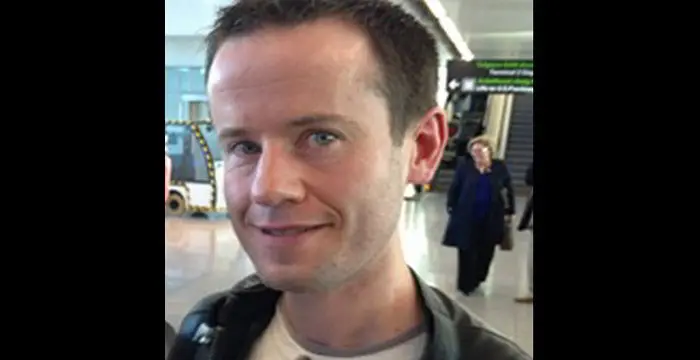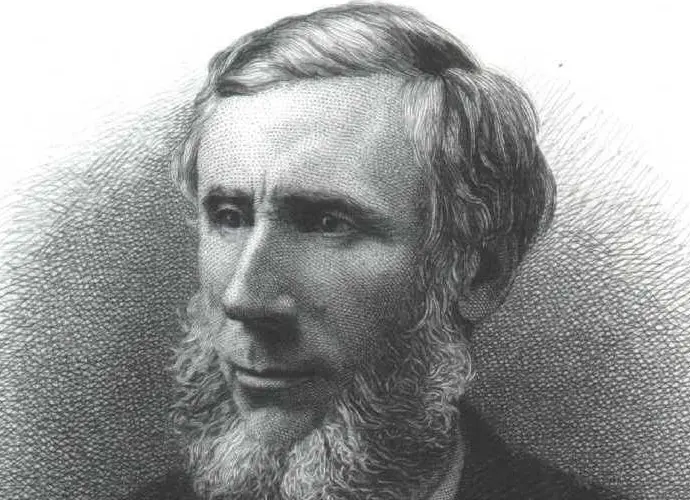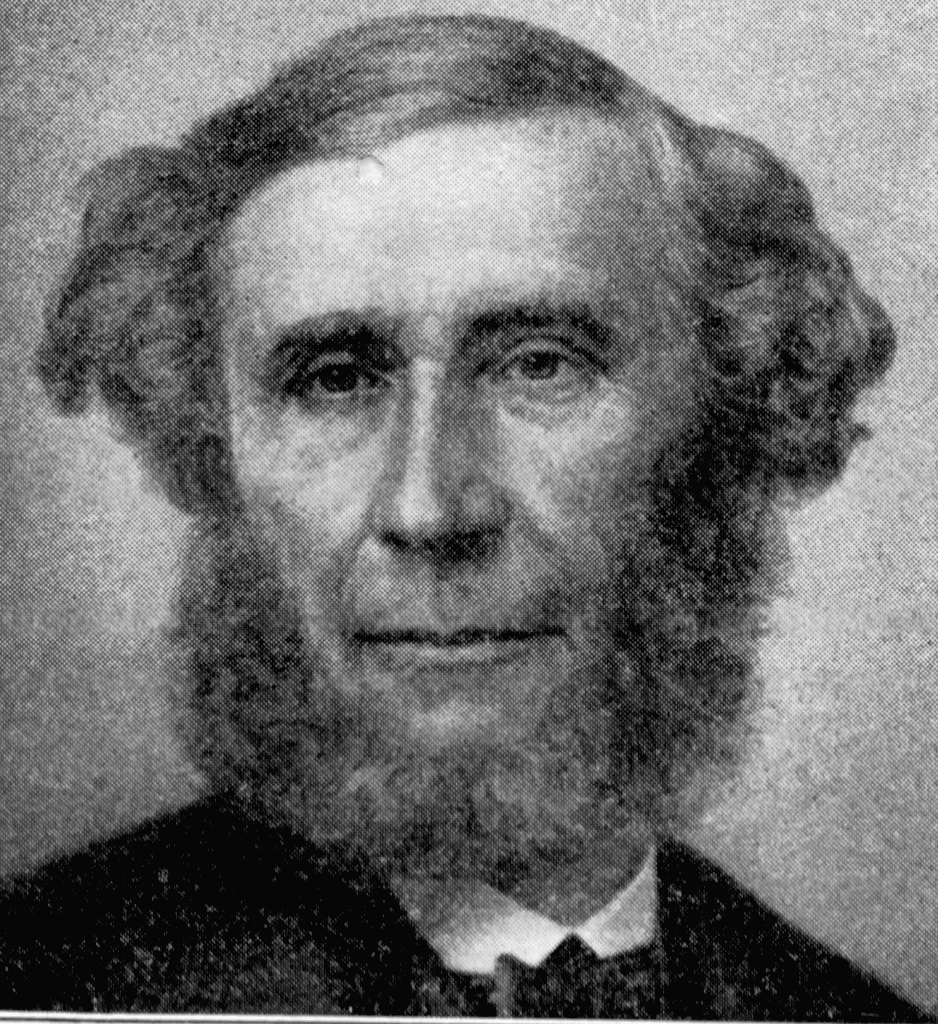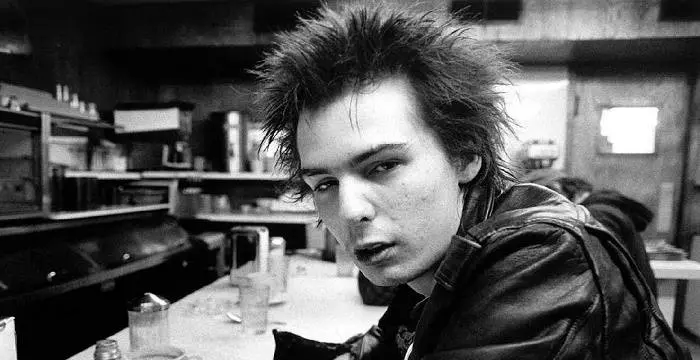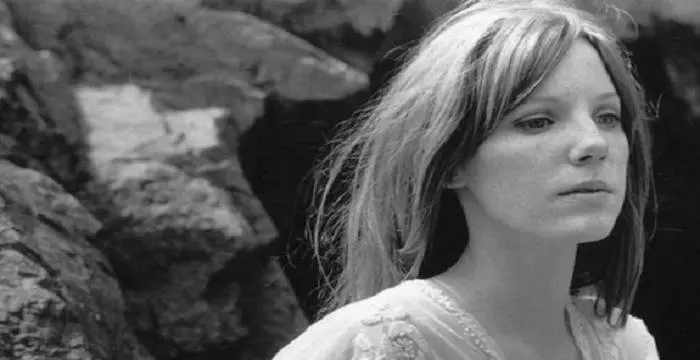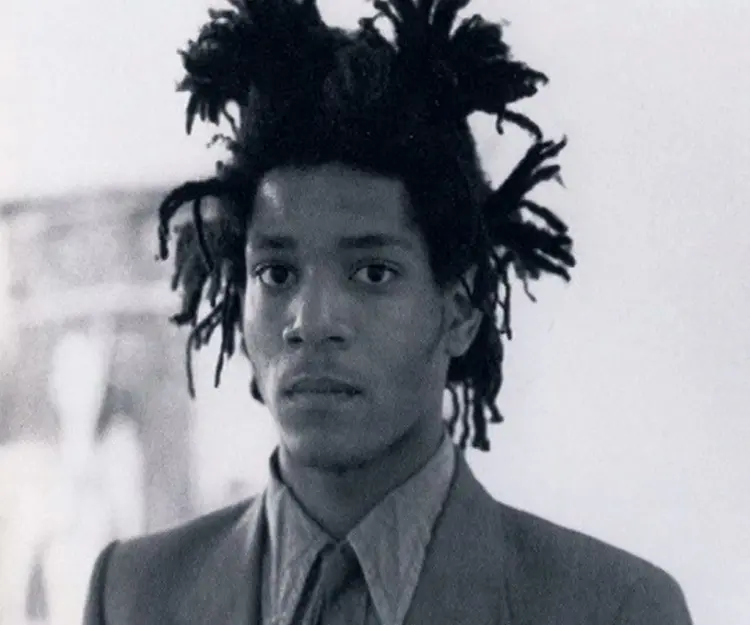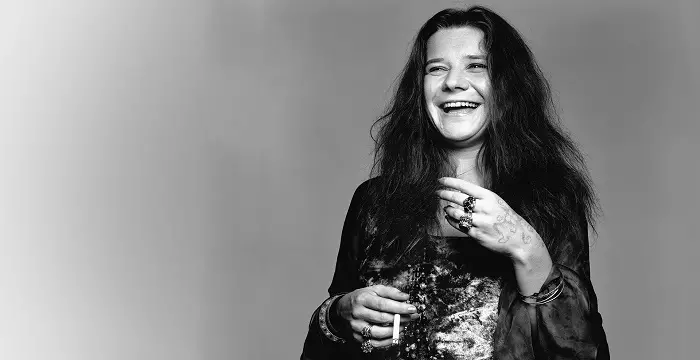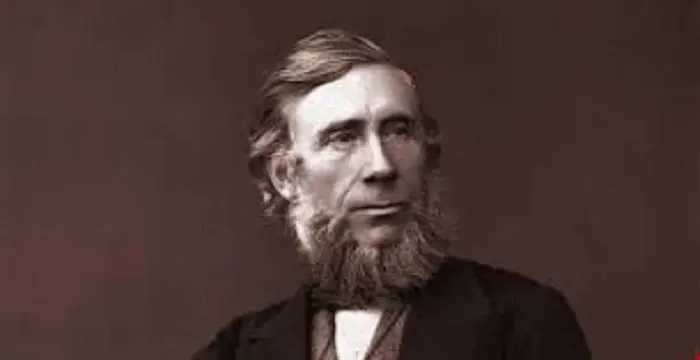
John Tyndall - Irish Men, Timeline and Childhood
John Tyndall's Personal Details
John Tyndall was an Irish physicist
| Information | Detail |
|---|---|
| Birthday | August 2, 1820 |
| Died on | December 4, 1893 |
| Nationality | Irish, British |
| Famous | Scientists, Physicists, Irish Men |
| Spouses | Louisa Hamilton |
| Universities |
|
| Cause of death |
|
| Birth Place | Leighlinbridge, County Carlow, Ireland |
| Born Country | Ireland |
| Gender | Male |
| Father | John Tyndall |
| Mother | Sarah Tyndall |
| Sun Sign | Leo |
| Born in | Leighlinbridge, County Carlow, Ireland |
| Famous as | Physicist |
| Died at Age | 73 |
// Famous Irish Men
Greg Horan
Greg Horan is the elder brother of 'One Direction' member Niall Horan. Check out this biography to know about his family, personal life, relationships, etc.
Jack Duff
Jack Duff is a music artist from Ireland. Check out this biography to know about his family, personal life, including his birthday, age, etc.
Barry Herridge
Barry Herridge is an Irish psychotherapist and the fourth husband of famous Irish singer and songwriter Sinéad O’Çonnor. Check out this biography to know about his childhood, family, personal life, etc.
John Tyndall's photo
Who is John Tyndall?
John Tyndall was an Ireland born physicist and one of the most important scientists in the Victorian era in the United Kingdom. He was considered among the best experimental scientists of his era due to his rigour for scientific experiments as well as a sound knowledge of the apparatus that were used. John Tyndall was initially educated in his native Ireland and in fact even started working as a teenager but after he took up the job of a teacher of mathematics at a boarding school in Hampshire he decided to go to Germany for further education. In Germany he learnt the sciences and different processes involved in successful experiments from the leading scientists of the time that provided him a sound footing. Tyndall is credited with close to 150 different papers published over a period of 3 decades. In addition to that he wrote a number of text books that not only popularized the natural sciences among people but also helped students in getting a better understanding of the different scientific phenomena. Tyndall conducted extensive studies on the earth’s atmosphere, glacial flows, ozone and several other things that certainly mark him out as one of the busiest scientists of his time.
// Famous Scientists
Juliane Koepcke
Juliane Koepcke is a German-Peruvian biologist, who was the lone survivor among the 92 passengers and crew of the ill-fated LANSA Flight 508 that crashed in the Peruvian rainforest on 24 December 1971. Know more about her life in this biography.
Henry Cavendish
Henry Cavendish was a theoretical chemist and physicist, renowned for discovery of hydrogen and calculation of the mass of earth. To know more about his childhood, profile, timeline and career read on
Konstantin Tsiolkovsky
Konstantin Tsiolkovsky was a Russian rocket scientist and a pioneer of astronautics. This biography provides detailed information about his childhood, family, personal life, career, achievements, etc.
Childhood & Early Life
John Tyndall was born on 2 August, 1820 in the town of Leighlinbridge located in Country Garlow, Ireland. His father (also named John Tyndall) worked as a police constable in the town. His mother’s name was Sarah Tyndall. He had an elder sister.
He was initially educated at the schools located in his home town of Leighlinbridge and attended those schools till he was well into his teens. Other than mathematics, he had also studied land surveying at school.
In 1839, John Tyndall took up a job with the Ordnance Survey of Ireland in the capacity of a draftsman and three years later he started working for the Ordnance Survey of Great Britain.
He also worked as a teacher of mathematics at the Queenswood College boarding school located in southern England. Edward Frankland, the future chemist, was also a teacher at the school and on his advice, both Tyndall and Frankland took admission at the University of Marburg in Germany in 1848.
Tyndall was taught by such giants of the time like Robert Bunsen, Hermann Knoblauch and Heinrich Gustav Magnus in Germany. He completed his graduation and went back to England in the year 1951.
Career
Upon his return to England, John Tyndall was elected as a Fellow of the Royal Society in 1851 and the following year he was appointed as the Professor of Natural Philosophy or Physics by the Royal Institute in London. Tyndall came into contact with the brilliant scientist Michael Faraday at the institute and it proved to be a very fruitful friendship.
Tyndall was initially involved in the study of the earth’s atmosphere and specifically worked on how much radiant heat the various gases in the earth’s atmosphere can absorb. It was in 1859 that he successfully worked out the absorptive capabilities of different gases. He also became the first person to prove the green house effect theory and is credited with the Tyndall Effect which is the process of showing particles in the air by bathing it in intense light.
In around 1864, John Tyndall also devised a system by way of which the percentage of carbon dioxide in an isolated sample of human breath could be measured and his system has been in use in modern medical science as anaesthetic experts use it to check on the condition of patients who are under the effects of anaesthesia. In the same year he deduced that Ozone is nothing but oxygen in clusters.
Tyndall worked on a variety of research endeavours for more than 30 years starting from 1850 and in total he published a total of 147 papers that dealt with subjects starting from the earth’s atmosphere to how the sun’s rays going through atmospheric molecules makes the sky appear blue.
In 1856, Tyndall spent some time in the Alps to study the movement of glaciers and glacial flow. In the process, he also became a mountaineer. Tyndall also made plenty of efforts in order to make the sciences more popular among the general public and delivered public lectures. He also wrote plenty of books on elementary science. He retired at the age of 66.
Major Works
Other than the relentless research that he conducted over 3 decades as an academic, he was responsible for making the natural sciences popular among the general public. However, his most important work was on the studies of the earth’s atmosphere that provided the basis for future research on the subject.
Awards & Achievements
In 1853, John Tyndall was awarded the Royal Medal.
In 1864, the Royal Society awarded him the Rumford Medal.
Personal Life & Legacy
John Tyndall married Louisa Hamilton in the year 1876, when he was 55 years old. The couple had no children.
John Tyndall died at the age of 73 on 4 December, 1893 due to an unintended overdoes of cholera hydrate; a medicine he used to take to cure his insomnia.
// Famous Physicists
Henry Cavendish
Henry Cavendish was a theoretical chemist and physicist, renowned for discovery of hydrogen and calculation of the mass of earth. To know more about his childhood, profile, timeline and career read on
Walter Kohn
Nobel Laureate Walter Kohn was an Austrian-born American theoretical chemist and physicist. Check out this biography to know about his childhood, life, achievements, works & timeline.
Nikola Tesla
Nikola Tesla was a Serbian-American inventor, best known for his development of alternating current electrical systems. This biography of Nikola Tesla provides detailed information about his childhood, life, achievements, works & timeline.
John Tyndall's awards
| Year | Name | Award |
|---|---|---|
Other | ||
| 0 | Royal Medal (1853) | |
| 0 | Rumford Medal (1864) | |
John Tyndall biography timelines
- // 2nd Aug 1820John Tyndall was born on 2 August, 1820 in the town of Leighlinbridge located in Country Garlow, Ireland. His father (also named John Tyndall) worked as a police constable in the town. His mother’s name was Sarah Tyndall. He had an elder sister.
- // 1839In 1839, John Tyndall took up a job with the Ordnance Survey of Ireland in the capacity of a draftsman and three years later he started working for the Ordnance Survey of Great Britain.
- // 1848He also worked as a teacher of mathematics at the Queenswood College boarding school located in southern England. Edward Frankland, the future chemist, was also a teacher at the school and on his advice, both Tyndall and Frankland took admission at the University of Marburg in Germany in 1848.
- // 1850Tyndall worked on a variety of research endeavours for more than 30 years starting from 1850 and in total he published a total of 147 papers that dealt with subjects starting from the earth’s atmosphere to how the sun’s rays going through atmospheric molecules makes the sky appear blue.
- // 1851Upon his return to England, John Tyndall was elected as a Fellow of the Royal Society in 1851 and the following year he was appointed as the Professor of Natural Philosophy or Physics by the Royal Institute in London. Tyndall came into contact with the brilliant scientist Michael Faraday at the institute and it proved to be a very fruitful friendship.
- // 1853In 1853, John Tyndall was awarded the Royal Medal.
- // 1856In 1856, Tyndall spent some time in the Alps to study the movement of glaciers and glacial flow. In the process, he also became a mountaineer. Tyndall also made plenty of efforts in order to make the sciences more popular among the general public and delivered public lectures. He also wrote plenty of books on elementary science. He retired at the age of 66.
- // 1859Tyndall was initially involved in the study of the earth’s atmosphere and specifically worked on how much radiant heat the various gases in the earth’s atmosphere can absorb. It was in 1859 that he successfully worked out the absorptive capabilities of different gases. He also became the first person to prove the green house effect theory and is credited with the Tyndall Effect which is the process of showing particles in the air by bathing it in intense light.
- // 1864In around 1864, John Tyndall also devised a system by way of which the percentage of carbon dioxide in an isolated sample of human breath could be measured and his system has been in use in modern medical science as anaesthetic experts use it to check on the condition of patients who are under the effects of anaesthesia. In the same year he deduced that Ozone is nothing but oxygen in clusters.
- // 1864In 1864, the Royal Society awarded him the Rumford Medal.
- // 1876John Tyndall married Louisa Hamilton in the year 1876, when he was 55 years old. The couple had no children.
- // 4th Dec 1893John Tyndall died at the age of 73 on 4 December, 1893 due to an unintended overdoes of cholera hydrate; a medicine he used to take to cure his insomnia.
- // 1951Tyndall was taught by such giants of the time like Robert Bunsen, Hermann Knoblauch and Heinrich Gustav Magnus in Germany. He completed his graduation and went back to England in the year 1951.
// Famous Drug Overdose peoples
Sid Vicious
Sid Vicious was an English musician known for his work with the band ‘Sex Pistols’. Check out this biography to know about his childhood, family life, achievements and fun facts about him.
Chris Farley
Chris Farley was an American comedian and actor who made millions of people laugh with his lively comic acts. This biography of Chris Farley provides detailed information about his childhood, life, achievements, works & timeline.
Pamela Courson
Pamela Courson was the long-term companion of the American singer Jim Morrison. Check out this biography to know about her childhood, family life, achievements and fun facts about her life.
Layne Staley
Layne Staley was an American rock musician who was a member of the American rock band ‘Alice in Chains’. Read this biography to learn more about his childhood, life, works, achievements and timeline
Jean-Michel Basquiat
Jean-Michel Basquiat was an American graffiti artist who was one of the leading lights of the neo expressionist era in the 1980s. Check out this biography to know about his childhood, life, achievements, works & timeline.
Janis Joplin
Janis Joplin was an American singer-songwriter, also known as the ‘First Lady of Rock n Roll’. This biography of Janis Joplin provides detailed information about her childhood, life, achievements, works & timeline.
John Tyndall's FAQ
What is John Tyndall birthday?
John Tyndall was born at 1820-08-02
When was John Tyndall died?
John Tyndall was died at 1893-12-04
Where was John Tyndall died?
John Tyndall was died in Haslemere
Which age was John Tyndall died?
John Tyndall was died at age 73
Where is John Tyndall's birth place?
John Tyndall was born in Leighlinbridge, County Carlow, Ireland
What is John Tyndall nationalities?
John Tyndall's nationalities is Irish, British
Who is John Tyndall spouses?
John Tyndall's spouses is Louisa Hamilton
What was John Tyndall universities?
John Tyndall studied at University of Marburg
What is John Tyndall's cause of dead?
John Tyndall dead because of Drug Overdose
Who is John Tyndall's father?
John Tyndall's father is John Tyndall
Who is John Tyndall's mother?
John Tyndall's mother is Sarah Tyndall
What is John Tyndall's sun sign?
John Tyndall is Leo
How famous is John Tyndall?
John Tyndall is famouse as Physicist


